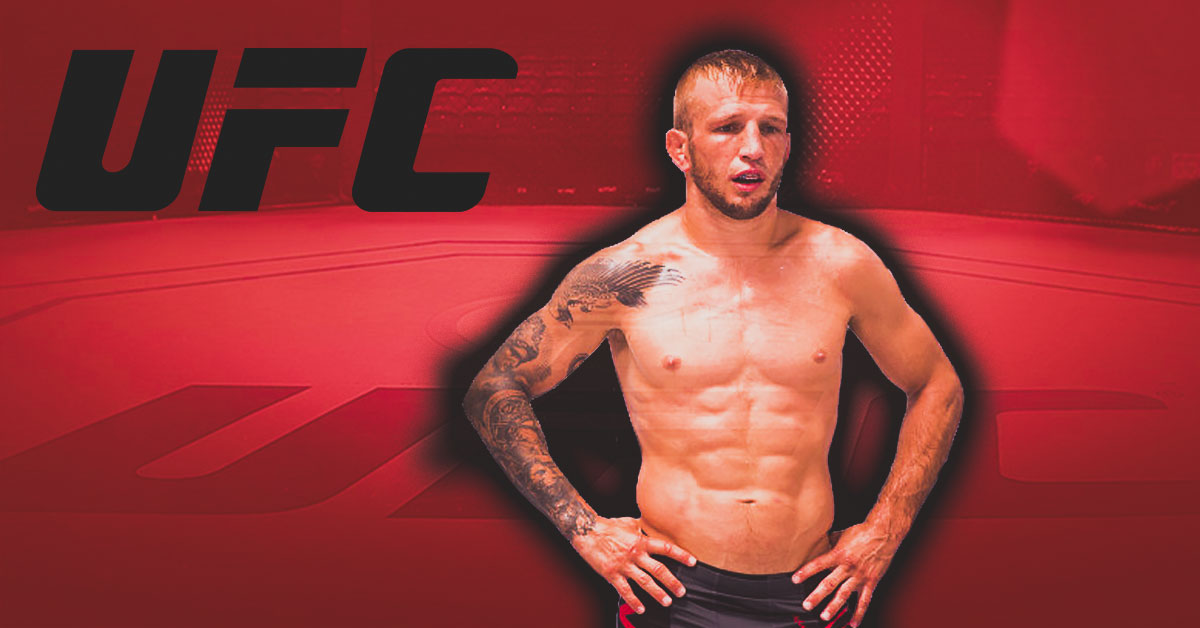Last month, we were caught by surprise when UFC bantamweight champion T.J. Dillashaw told the media that he would be relinquishing his title. After he was informed of an adverse finding in a drug test conducted concerning his January loss to Henry Cejudo. According to Dillashaw, he voluntarily surrendered his belt to deal with and resolve the matter.
The New York State Athletic Commission (NYSC), which sanctioned the Cejudo fight, reported they were suspending Dillashaw for one year ( retroactive to January 19th, the date of the fight). Also, he would be fined $10,000 “for violations relating to the use of a prohibited substance.”
 T.J. Dillashaw Suspended
T.J. Dillashaw Suspended
Three weeks later, the United States Anti-Doping Agency (USADA) announced that Dillashaw would be suspended for two years. Apparently, he tested positive for recombinant human erythropoietin (EPO) before his fight with Henry Cejudo. The two-year ban is the maximum punishment for a non-specified substance under the UFC’s anti-doping program.
The USADA also added that it reviewed another sample submitted by Dillashaw on December 28, 2018, and that sample also tested positive for EPO. Initially, the drug was not detected because a special test is required to identify EPO and that test is not used for 100% of the athletes’ samples.
On a scale of seriousness, Dillashaw’s adverse findings are very high. While other banned drugs are found in supplements, EPO can only enter an athlete’s system via injection, which means Dillashaw knew what he was doing. He could not deny taking a banned substance.
 Was TJ On EPO When He Fought Garbrandt?
Was TJ On EPO When He Fought Garbrandt?
In 2017, former sparring mate and teammate Cody Garbrandt accused Dillashaw of drug use during the lead up to their bantamweight title fight. Dillashaw knocked out Garbrandt in November 2017. According to Garbrandt, Dillashaw proudly admitted and showed everyone on the team in Sacramento how to use drugs.
In a more serious and accurate accusation in 2018, Garbrandt publicly accused Dillashaw of EPO use during a social media exchange:
Cody Garbrandt posted this on Twitter in April of 2018, specifically accusing Dillashaw of using EPO. pic.twitter.com/fiBXf3Z45z
— Aaron Bronsteter (@aaronbronsteter) April 9, 2019
Considering Dillashaw and Garbrandt fought on November 4, 2017 (UFC 217) and August 4, 2018 (UFC 227), it’s very possible and likely that Dillashaw was on EPO on both fights. Or has been on EPO all his career? We can only speculate on those but what we can confirm is that EPO is considered as one of the most disgraceful substances that a fighter can test positive for.
What Is EPO?
EPO or erythropoietin is a hormone produced naturally by the kidneys. It is used to stimulate the production of red blood cells in response to a falling level of oxygen in the human body. However, EPO can be produced artificially to improve the performance of athletes via injection under the skin.
The more red blood cells there are in your body, the more oxygen can be delivered to the muscles. Hence, this delays the onset of fatigue on athletes which in turn increases endurance and recovery time. Long-distance runners usually used this drug so they can run longer and harder without getting tired. According to reports, tests in Australia revealed that EPO injection showed that improvement of an athlete’s performance over four weeks matched those expected over several years.
EPO use cannot be traced using conventional drug testing. Methods developed in France compared both urine and blood analysis. The blood test will reveal if there is an unusual reading of blood cells. On the other hand, the urine samples will then be able to highlight the difference between EPO produced naturally and those produced synthetically.
 What’s Next For Dillashaw?
What’s Next For Dillashaw?
No doubt, EPO use is serious as it gives the athlete a clear unfair advantage over his clean opponent. In Dillashaw’s case, perhaps that explains why he’s always had crazy cardio. Remember that Dillashaw wasn’t a big name when he shocked the world and knocked out Renan Barao at UFC 173 in the 2014 Upset of the Year. Then, of course, he stopped Barao again during their rematch one year later. The first bout went five rounds and the second one four and T.J. looked fresh as the morning after both fights.
Then Dillashaw also knocked out Cody Garbrandt twice and looked like a machine. Wasn’t T.J. hurt first in the first bout and then amazingly recovered to knockout out Garbrandt later in the fight? We can only speculate on these matters. The fact is that an “ordinary” drug test couldn’t detect EPO, it’s possible that Dillashaw had been using this drug during his rise to power.
Dillashaw is already 33 years old and will be 35 when he is eligible to be reinstated. It’s not even sure if he will be reinstated given the gravity of his case. And it’s not even sure if the fans will accept him back even if he is reinstated. Dillashaw looks like the Lance Armstrong of MMA right now and everything is going downhill very fast. Dillashaw though only has himself to blame for all of this.
Indeed, the fall of T.J. Dillashaw is one of the saddest stories we’ve ever heard. For once we thought he was one of the best pound for pound fighters in the planet. Now we know he’s one of the biggest drug cheats of all-time. I can only feel for Cody Garbrandt, who was on a meteoric rise when he fought Dillashaw twice. Cody is damaged goods right now and I’m not sure if he recovers after those two losses which really shouldn’t have happened. I rooted for Dillashaw against Garbrandt. But now, I feel Cody’s anger, pain, and frustration. A cheater destroyed his career and not even the cheat being caught is going to change that.

 MENU
MENU











